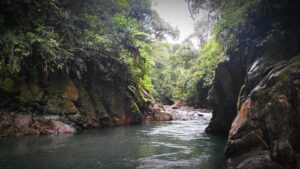Camanti: Turning a Former Mining Hotspot in Peru into a Recognized Conservation Area
April 27, 2022
 In 2019, we reported record high levels of gold mining deforestation in the southern Peruvian Amazon, with the Camanti area in the Cusco region representing one of the top three most threatened areas after La Pampa and Upper Malinowski. But this past week the protected area was officially established as the Camanti Sostenible Conservation Concession, which covers 38,172 acres (15,448 hectares).
In 2019, we reported record high levels of gold mining deforestation in the southern Peruvian Amazon, with the Camanti area in the Cusco region representing one of the top three most threatened areas after La Pampa and Upper Malinowski. But this past week the protected area was officially established as the Camanti Sostenible Conservation Concession, which covers 38,172 acres (15,448 hectares).
The Camanti conservation area includes ecologically important cloud forest along a notable altitudinal gradient of 1,800 to 7,200 feet (550-2,200 meters) above sea level. As a result, it is home to unique plants and animals only found in small elevational ranges. Species found in the Camanti Sostenible area include the rare pacarana (Dinomys branickii) along with endangered and threatened species such as the jaguar, giant anteater, giant armadillo, black-and-chestnut eagle, and the Andean bear.
Because Camanti Sostenible borders the Amarakaeri Communal Reserve, the establishment of this area hinders the advancement of illegal mining that threatened indigenous communities in years past. At its eastern side is the 2.6 million acre Bahuaja Sonene National Park, while to the south and north are 172,800 acres of protected forests that we established in 2019 and 2020, the Ausangate Regional Conservation Area and Señor de la Cumbre. Thus, Camanti Sostenible adds to a mosaic of conservation areas, indigenous territories, and local forests that provide a corridor of forests necessary for species to ensure connectivity, functionality and ecological integrity in one of the most biodiverse areas of the world.
This recognition is possible thanks to the joint work of our sister organization on the ground in Peru, Conservación Amazónica – ACCA, the Camanti Sostenible Association, the technical team at the Forestry and Wildlife Administration of Cusco, and the valuable financial support of the Proyecto Amazonía Resiliente – SERNANP UNDP, and Andes Amazon Fund.

